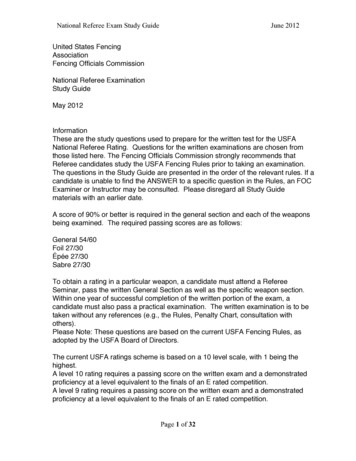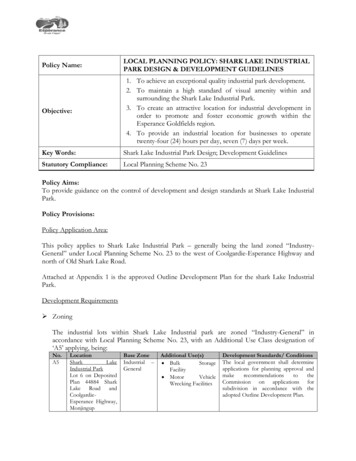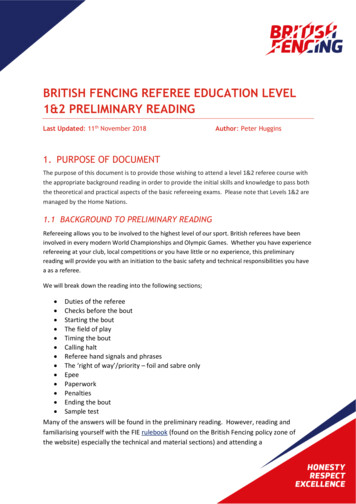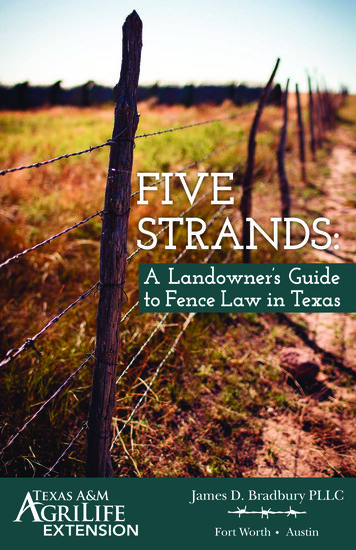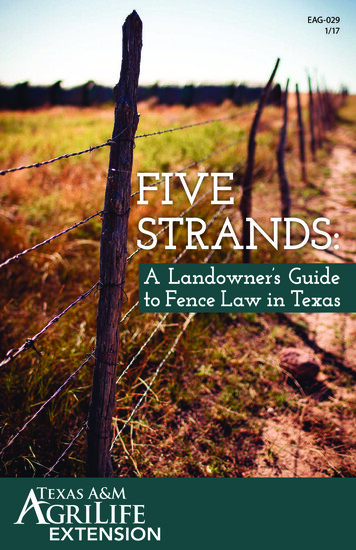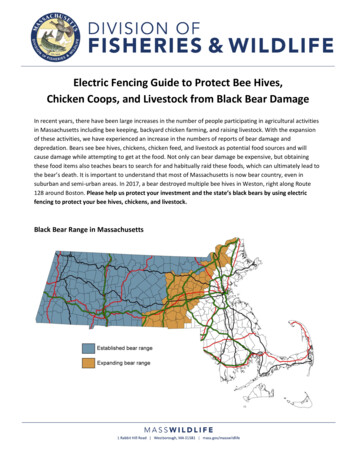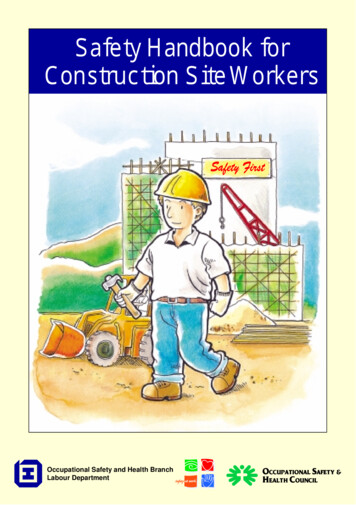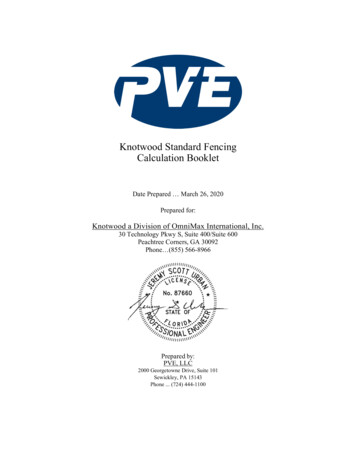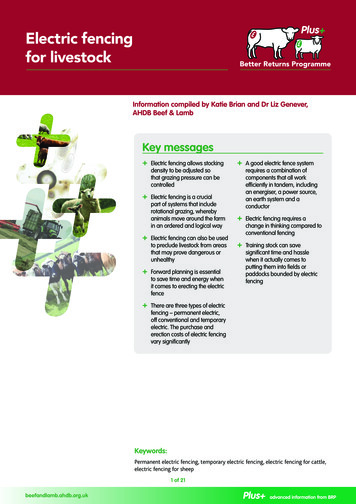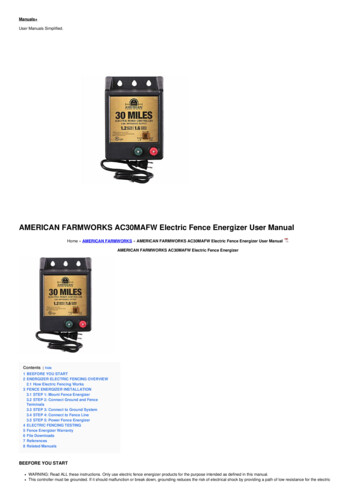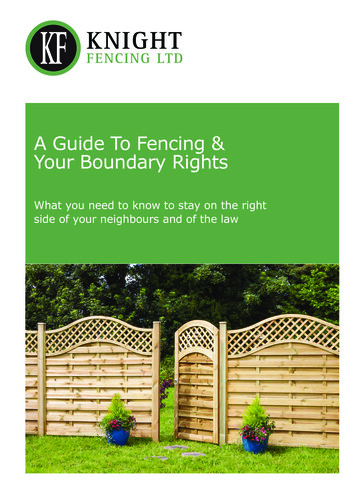
Transcription
A Guide To Fencing &Your Boundary RightsWhat you need to know to stay on the rightside of your neighbours and of the law
Fencing and your boundary rightsYour property boundary and boundary rights aren’t something you think about very often.But when you need to, it really does pay to know exactly what you can and can’t do when itcomes to installing, repairing and using fencing.Whether there’s a dispute over fencing or fencing needs replacing or fixing, you’ll save moneyand avoid serious stress if you know what your boundary rights are.So, to help make sure you do, we’ve put together the following advice based on the questionswe’re asked the most.Do I have to put a fence up?This might surprise you, but you don’t have to have fencing – there’s no law that says you do.You’re only legally obliged to put up fencing under certain conditions. The most common are ifyou live next to a railway, if you need to prevent livestock from leaving their fields and if yourdeeds require you to.However, there are a lot of good reasons to put fencing around your property – safety andsecurity are the big ones. A well-installed, good-quality fence will help keep things in (childrenand pets) and other things out (burglars and other unwelcome guests).In addition, good-quality, properly installed fencing (and gates) can make your property moreattractive and significantly add to its value.
How do I mark my boundary?Customers having new fencing installed often ask us exactly where they should position theirnew fence. Getting it right avoids (potentially costly) disputes over encroachment in the future.As a rule of thumb, the outer face of the fence should be placed along the boundary. Theposts should stand on your land.Of course, there are plenty of types of fencing, and where you should position your fence canchange depending on the style you choose. But the golden rule still applies whether you havecloseboard panel fencing, post and wire fencing or trellis panels: the outermost part of yourfence or posts should always be placed against the boundary (not over it).If your fencing needs any type of footing to secure it, the footing is allowed to be partlybeneath your neighbour’s land. According to the Party Wall etc. Act 1996, this does notconstitute encroachment.What can I do if my neighbour’s fence is falling down?This is a common problem.There’s nothing like damaged or broken fencing to strain neighbourly relations. However,regardless of the state of your neighbour’s fencing, you are not allowed to do any repairs,including painting, staining, varnishing or installing new panels or trellis.What you can do is to put up your own fencing alongside your neighbour’s fence, or popdown to your local garden centre and pick up some free-standing plants or shrubs to hide thedamage.Remember, properly installing and maintaining your fence saves you money and avoidsstress. Invest in and look after your fencing and you’ll spend less on repairs and you’re lesslikely to get into an argument with your neighbours over its condition.
What fencing am Iresponsible for?This must be the boundary-related questionwe get asked the most.Firstly, there is no general rule such as thefence to the left or to the right. So, withthat myth busted, the best thing to do is todig out your deeds (ownership is decided bythe original landowner, so can differ fromproperty to property). Your deeds should tellyou who owns what and who is responsiblefor the upkeep of what fencing.Can I use my neighboursfencing as a support forplants, etc.?It’s simple: you can only do this if yourneighbour says you can.If you lean something against or hangsomething on your neighbour’s fence withoutpermission and the extra burden on thepanels causes damage to the fencing (whichis very likely to happen sooner or later), youwill have to pay for the repairs.What are the rules onfencing height?How can I work out the ageof my fencing?The rules on fencing height are part of localplanning policy, so for a definitive answer youshould get in touch with your local authorityplanning office.If you had the fencing installed and kept arecord of payment, then your invoice shouldtell you how old your fencing is.As a rule of thumb, garden fences in yourback garden are permitted to be a maximumof two metres high.Can I paint, stain or varnishmy neighbour’s fencing?As with leaning something against or hangingsomething on your neighbour’s fence, youshould only paint, stain or varnish yourneighbour’s fencing with their permission.However good your intentions, if you do itwithout their say so it’s criminal damage.If you don’t have an invoice, it’s worth goingthrough old family photos. There’s a chancethat you’ll be able to identify a clear changein the fencing and work out a date based onthe photos.Some customers have asked if tree dating is agood way of finding out the age of fencing. Theshort answer is no. It’s a good way of determiningthe age of the wood, but not the fence.Want to know more about our fencing?Need your fencing installed?Our fencing experts and specialistinstallation team are ready to help.Give us a call, send us a message orcome and visit us.
Recommended fencing foryour propertyOur range of high-quality residential fencingand gates includes:Heavy-duty closeboardpanelsBuilt to last, our heavy-dutycloseboard panels are easyto erect and are designed towithstand high winds.Five bar gatesOur traditional-look fivebar gates are strong andversatile, and can be adaptedto special widths and heights.Trellis panelsOur timber trellis panelsare expertly made. Robustand long-lasting, they areattractive and easy to install.Closeboard fencing panelsThis popular fencing isrenowned for its strengthand durability. It’s attractive,versatile and easy to install.Post and rail fencingStrong and durable and madeto the highest standard,our post and rail fencing isattractive and easy to install.Waney-edge panelsEasy to install and longlasting, these popularfencing panels are attractiveand require only minimalmaintenance.Palisade picket fencingDecorative in appearance,this hard-wearing fencing isavailable in a range of stylesand sizes, and is easy to install.Post and wire fencingEasy to install, our post andwire fencing is robust andbuilt to last, and offers extraprotection at its base.Metal railings and gatesOur metal railings andgates look good and provideexcellent security. They arestrong and durable, andcomplement brick walling.
To find out more about residential fencingfrom Knight Fencing, contact us on:t: (01243) 641272 01579 529298e: info@knight-fencing.co.ukw: www.knight-fencing.co.uk
security are the big ones. A well-installed, good-quality fence will help keep things in (children and pets) and other things out (burglars and other unwelcome guests). In addition, good-quality, properly installed fencing (and gates) can make your property more attractive and significantly add to its value. Fencing and your boundary rights
